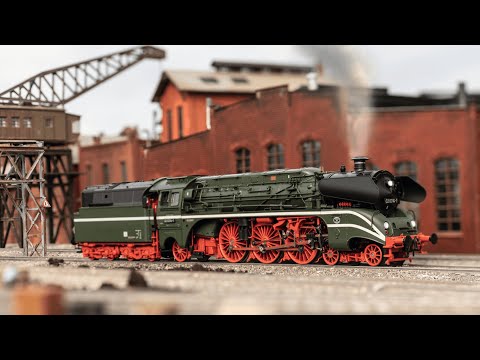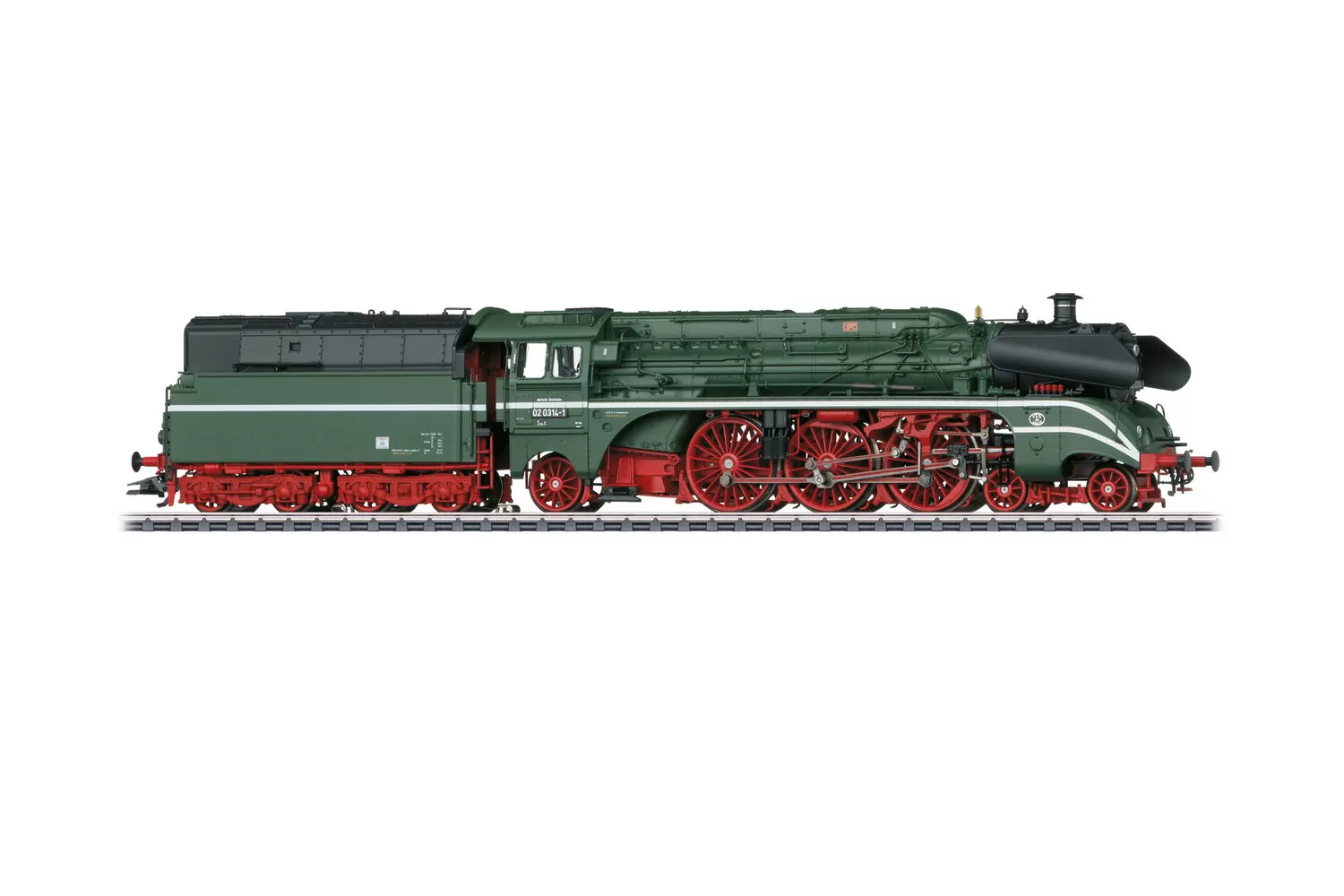
Source: maerklin.de
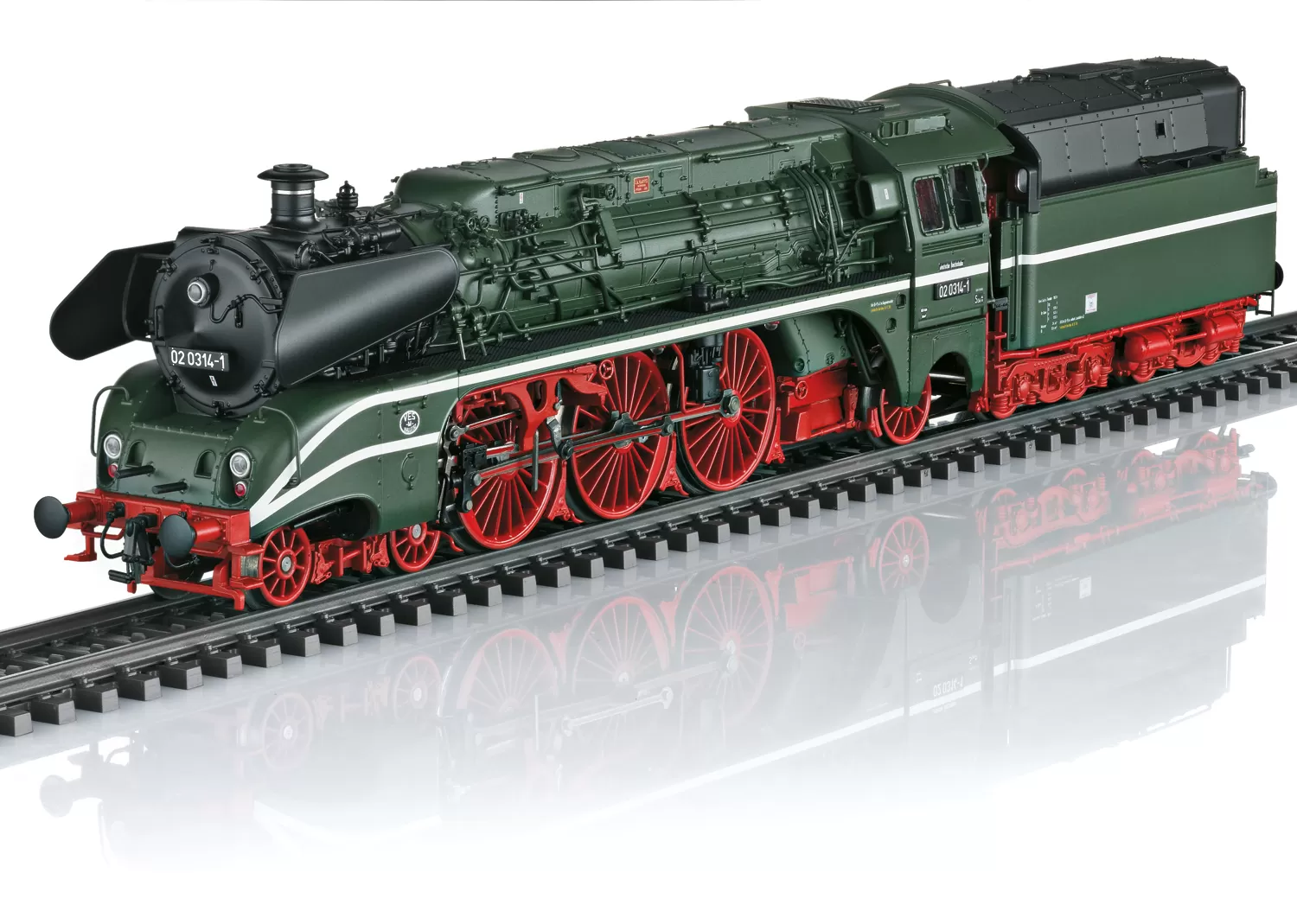
Source: maerklin.de
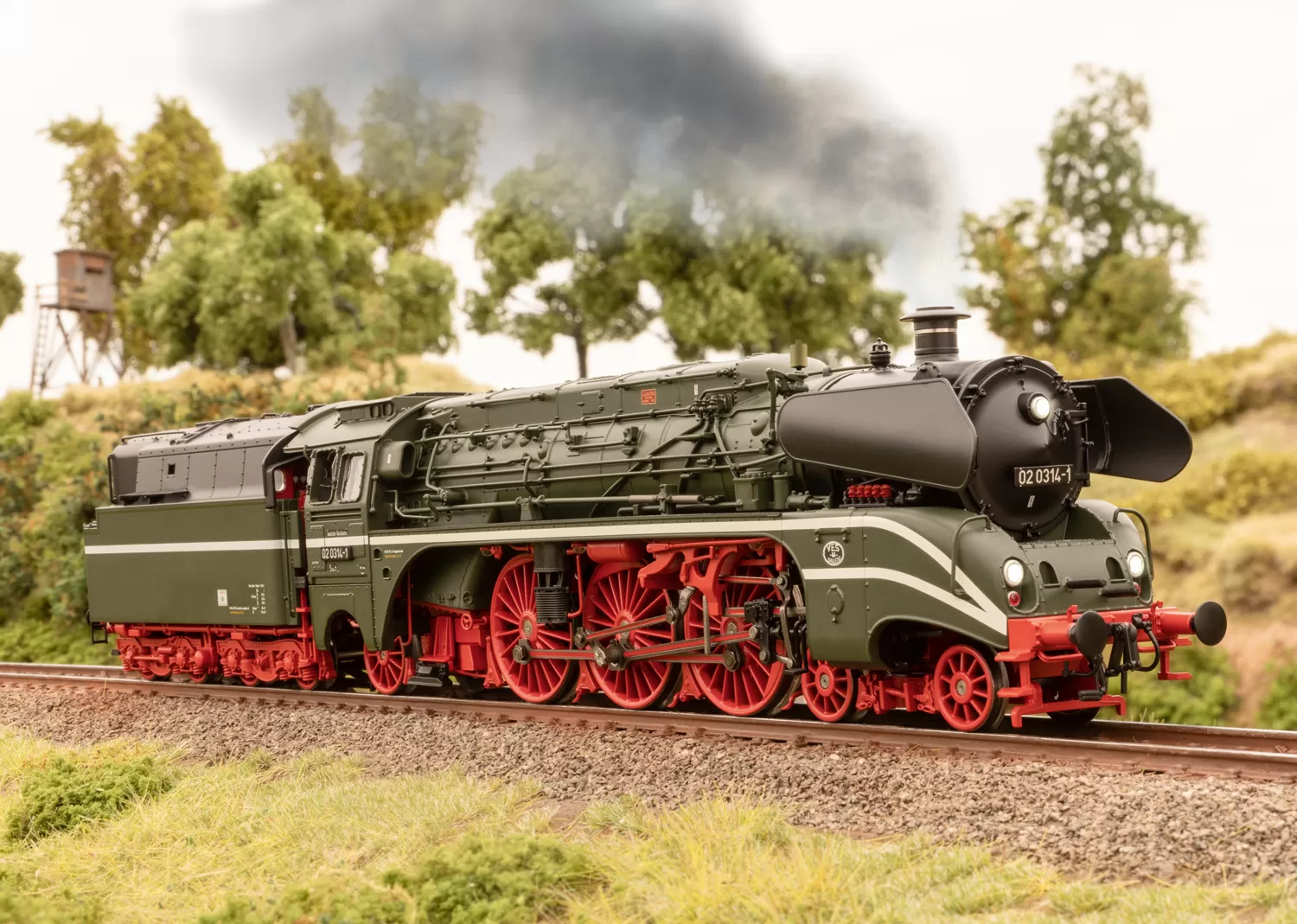
Source: maerklin.de
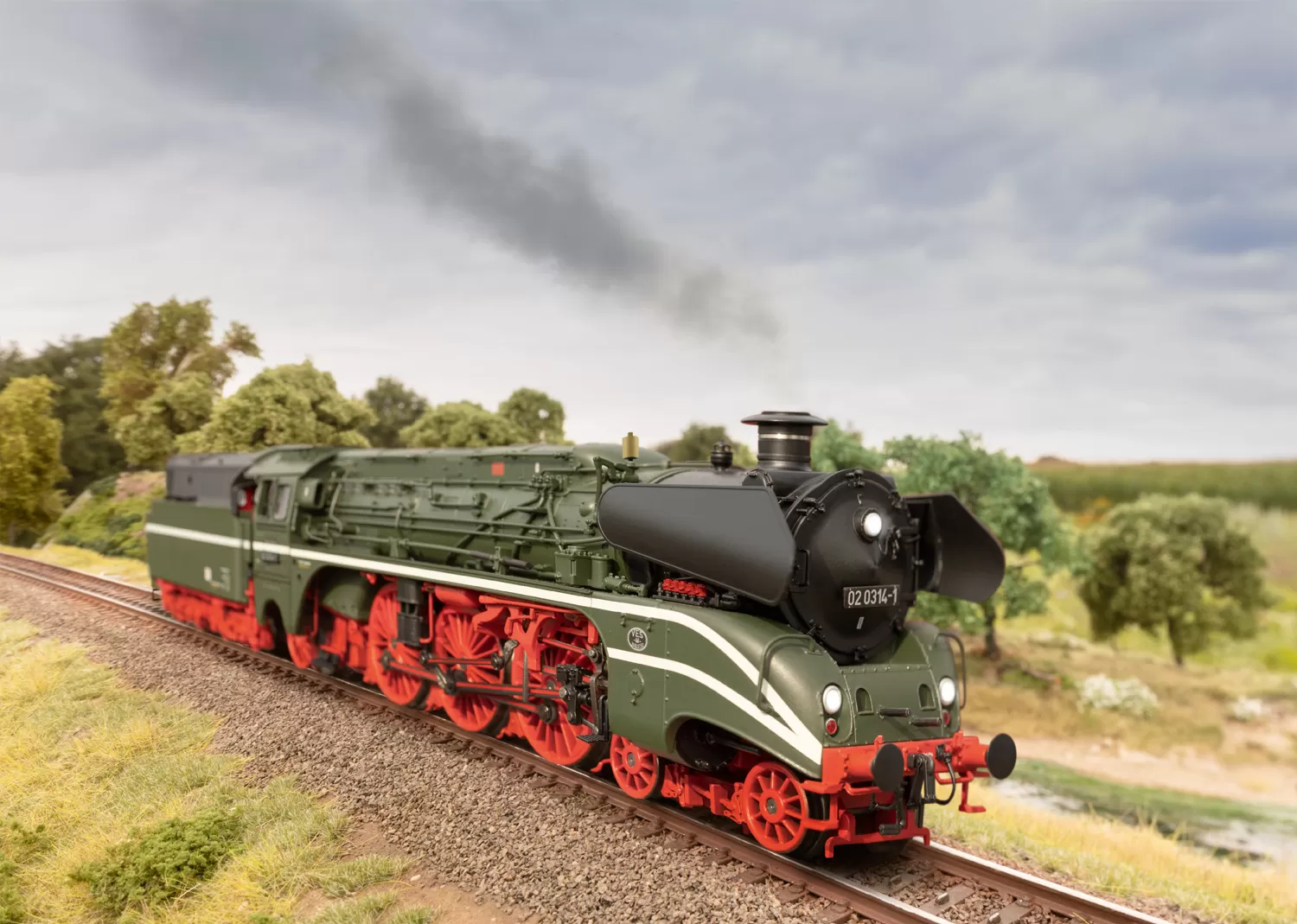
Source: maerklin.de
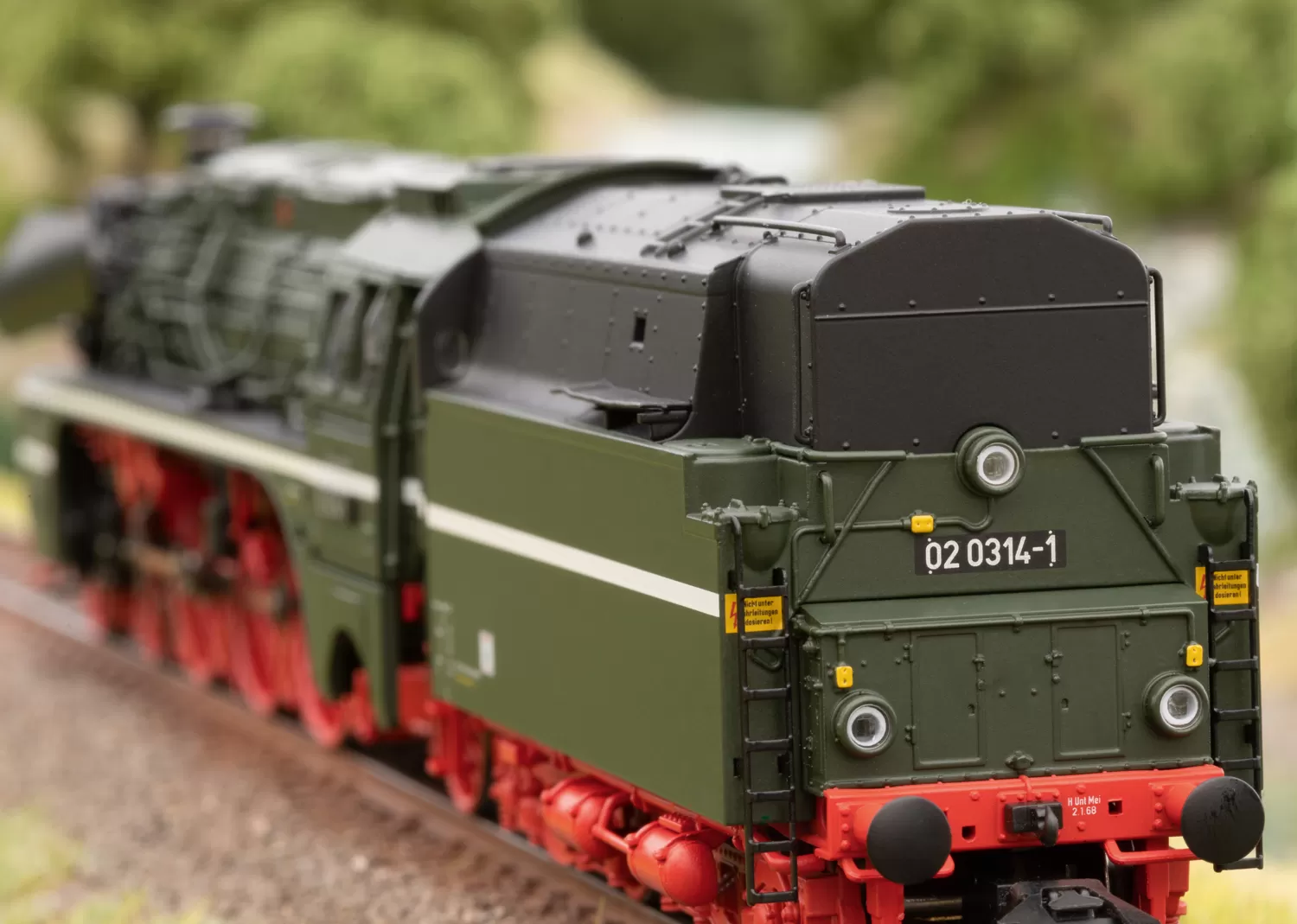
Source: maerklin.de
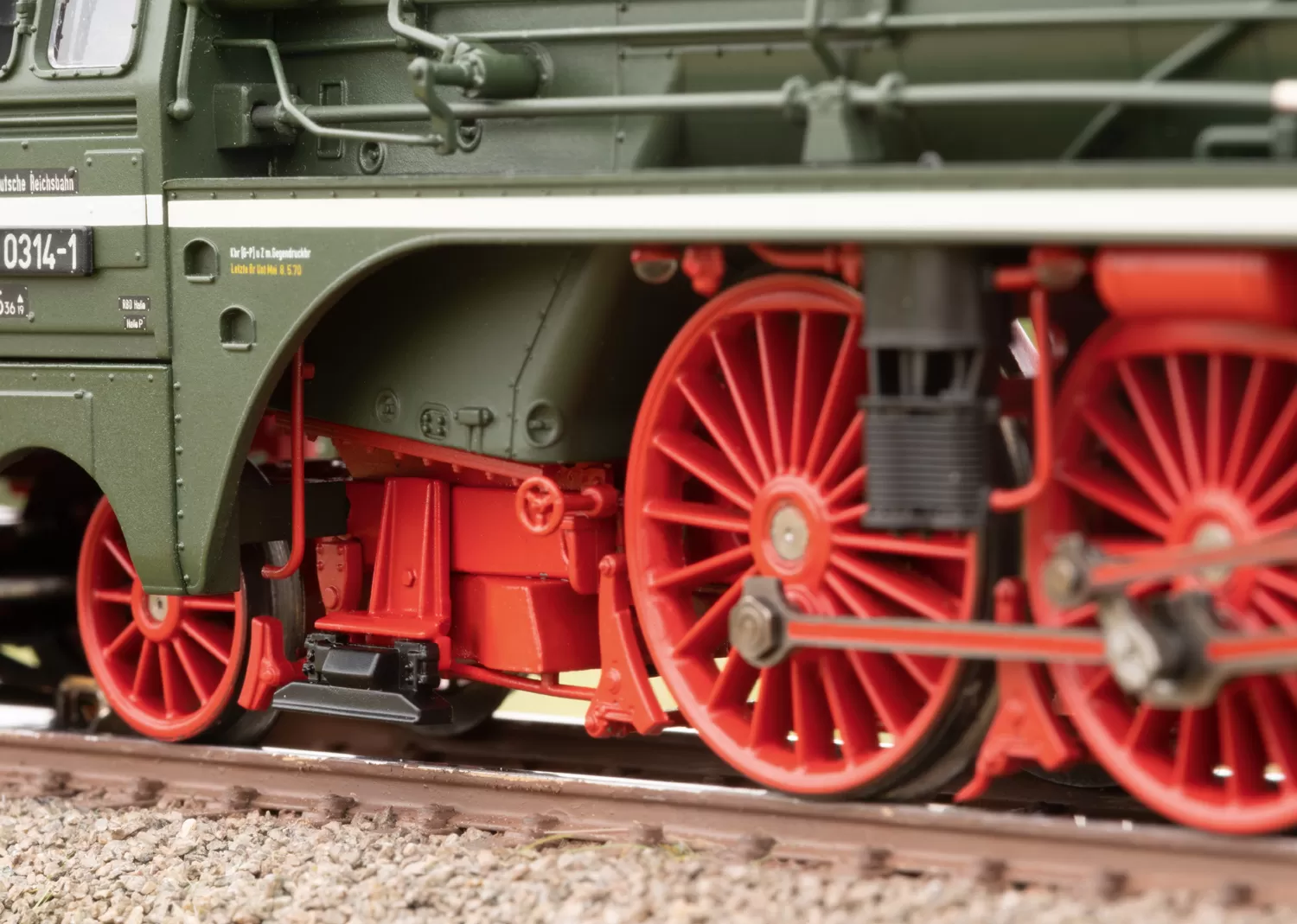
Source: maerklin.de
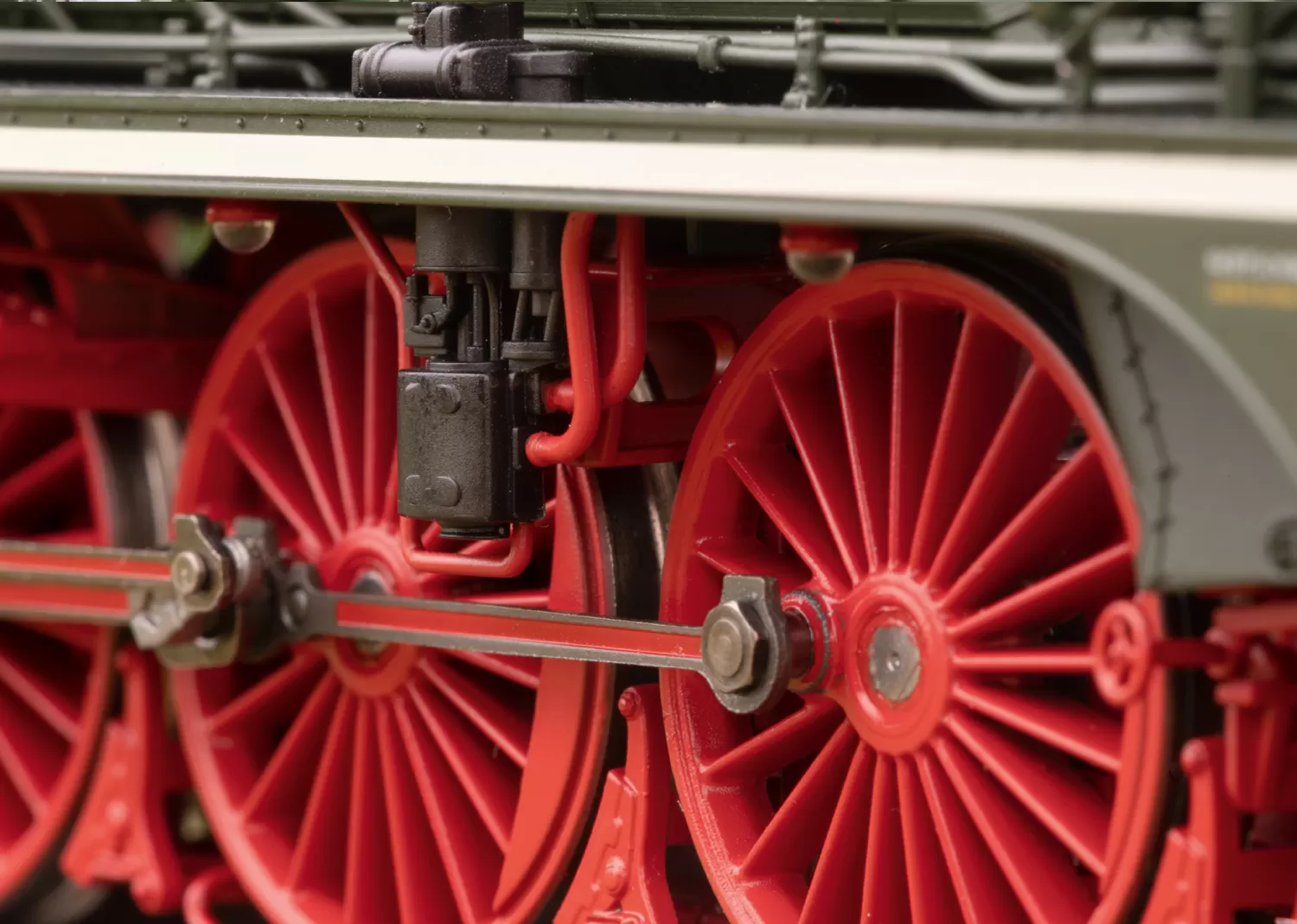
Source: maerklin.de
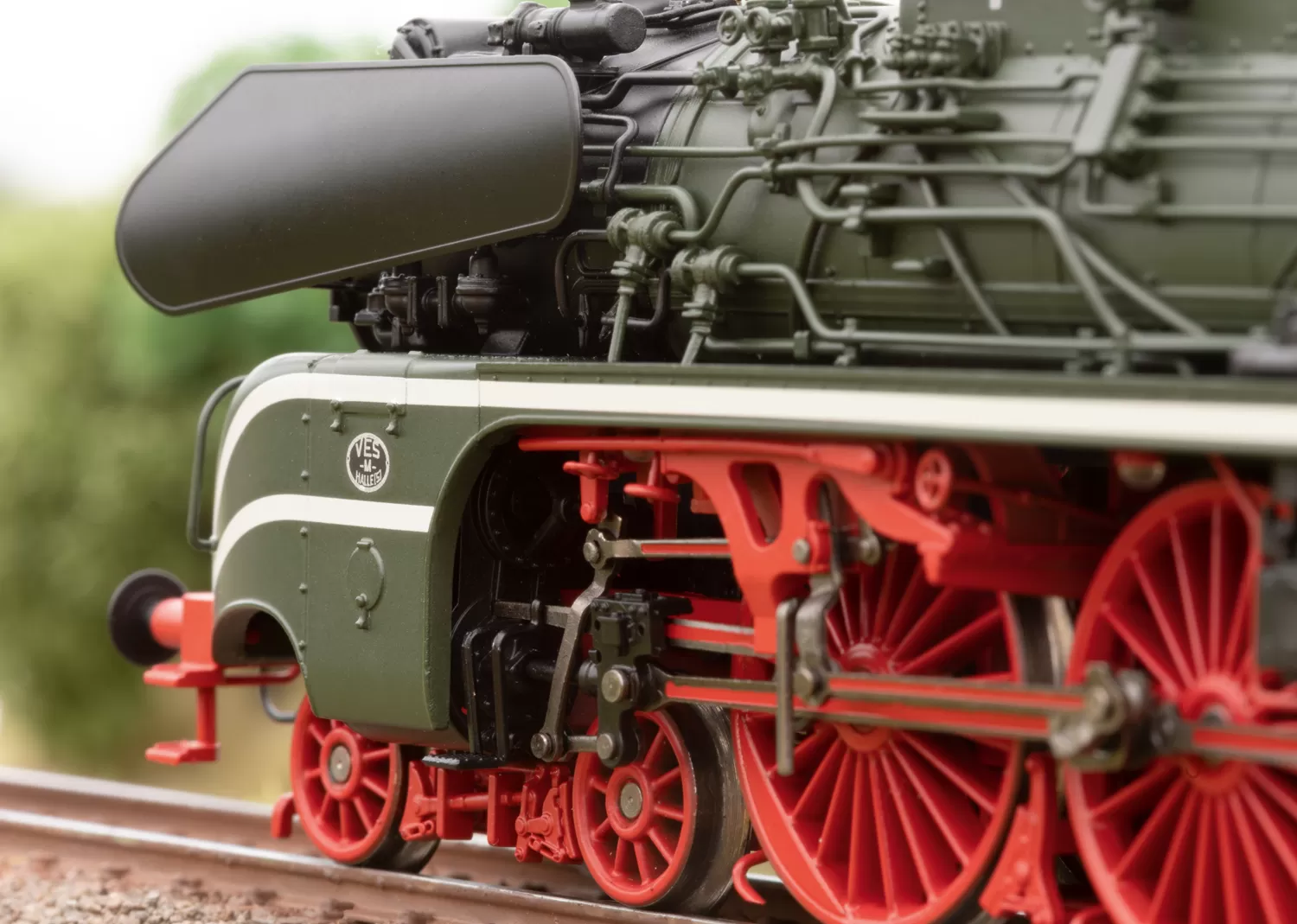
Source: maerklin.de
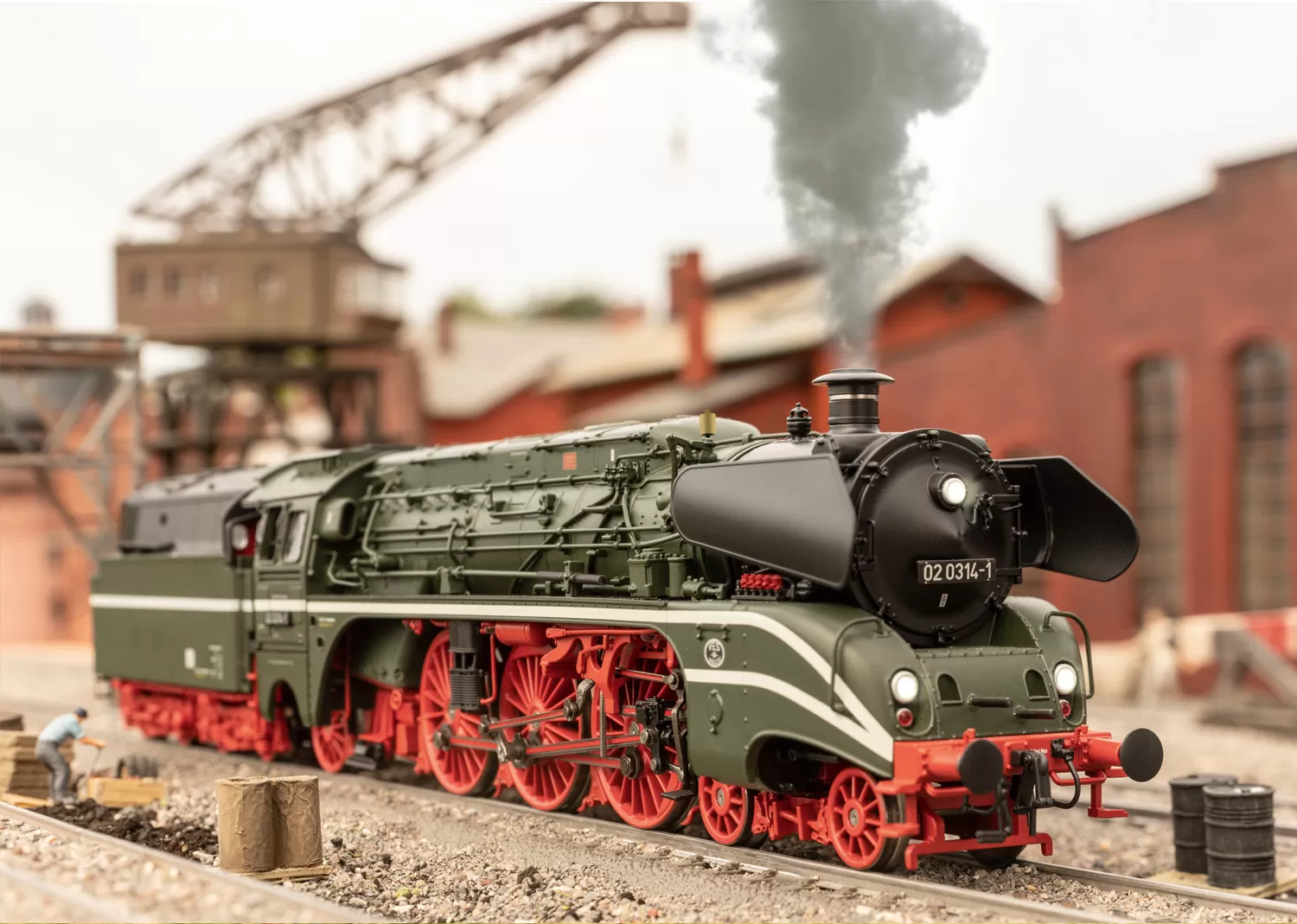
Source: maerklin.de
DR - Class 02 steam locomotive
The steam locomotive road number 18 314 of the German State Railroad (DR) of East Germany (GDR) later nicknamed "Schorsch" has an unusual, even extraordinary life history. Once placed into service in 1919 as a Baden class "IV h" "High Stepper", the DRG took over it as road number 18 314. After the end of World War II, this locomotive went to the Soviet Zone in trade for a Bavarian class S 3/6, where the subsequent VES-M Halle (Railroad Research and Development Locomotive Management Department in Halle) urgently needed a fast four-cylinder compound steam locomotive for experimental work. In 1960, it was equipped with a "Reko" (rebuilt) boiler, partial streamlining, a new cab and tender, as well as a green paint scheme in order to run faster. Conversion to oil firing in 1967 was the icing on the cake. It was put into storage at the end of 1971 and was sold in 1984 to West Germany. Since 1986, it has been one of the showpieces at the Automotive and Technology Museum in Sinsheim. It is on permanent loan from the HEF (Frankfurt Historic Railroad).
Prototype: German State Railroad (DR/GDR) of East Germany express train steam locomotive, road number 02 0314-1, with oil main firing and an oil tender. Converted version as an experimental locomotive for the VES-M Halle (Saale) (Railroad Research and Development Locomotive Management Department). Version with a "Reko" (rebuilt) boiler and partial streamlining, based on road number 18 314 (former Baden class IV h). Witte smoke deflectors and an inductive magnet on one side included. The locomotive looks as it did around 1970/71.
Road number 18 314 (starting July 1, 1970: 02 0314) forms a unique one-of-a-kind on the German State Railroad (DR) of East Germany in the series of Baden Pacific express locomotives, class "IV h", which were delivered by Maffei from 1918 to 1920 in three production runs totaling 20 units. The DRG took over all 20 locomotives as road numbers 18 301-303, 18 311-319, and 18 321-328. They were predestined for heavy express train service, primarily on the Rhine Valley Line Basle – Mannheim. Starting in 1933, these locomotives slowly wandered north, and they were based for a short time in Darmstadt, Koblenz, and Hamburg-Altona. They finally all found a new home in Bremen. Except for road number 18 326, all of the locomotives survived World War II. However, they were retired as early as 1948 as a splinter class. Only road numbers 18 316, 319, and 323 remained on the roster for experimental purposes for the German Federal Railroad's central office at Minden. By contrast, road number 18 314 went in April of 1948 to the subsequent German State Railroad (DR) in the Soviet Zone (from 1949 on the GDR) in an exchange for road number 18 434 (former Bavarian class S 3/6). This was done at the instigation of Max Baumberg – the subsequent manager of VES-M Halle (Railroad Research and Development Locomotive Management Department). After a major overhaul completed at the beginning of August 1948 at the maintenance facility in Stendal, it was initially used from Stendal and then starting in April 1950 from Dresden-Altstadt in special train service. Starting in August 1950, came a longer stay in Meiningen to serve as an experimental locomotive as planned for the Railroad Research and Development Locomotive Management Department in Halle (VES-M Halle). For its experimental work, it was equipped with Riggenbach counter-pressure brakes, and its tender was replaced by one from a French North Railroad steam locomotive. Chiefly in the service of the VES-M, road number 18 314, soon nicknamed "Schorsch", achieved annual running distances by 1959 of 18,000 to 57,000 kilometers / 11,250 to 35,625 miles. At the end of the Fifties, the VES-M needed faster locomotives to test among other things passenger cars for 160 km/h / 100 mph. Yet, such fast running locomotives were not available. For that reason, road number 18 314 was now to be modified accordingly to reach higher speeds. Its conversion at the maintenance facility in Zwickau thus began in April of 1960 as part of a major overhaul. It was equipped with a new, modified combustion chamber boiler, the type 39E, a new cab, and a type 2‘2‘T34 standard design tender. The cylinders and boiler appliances were provided with partial streamlining and small, specially designed smoke deflectors were also installed. Last but not least, it now also gleamed in a green paint scheme with white striping. A fully newly designed road number 18 314 thus left the maintenance facility in December of 1960 and it could now reach a maximum speed of 150 km/h / 94 mph. By 1967, it achieved an annual running distance of up to 76,000 kilometers / 47,500 miles, amazing for a locomotive in experimental work, not so surprising since it was now being used in scheduled express train service. A last major overhaul starting in September of 1967 gave this locomotive oil firing, which made it somewhat more powerful. For two years, it was regularly under steam and then its use was reduced considerably. Even though it did several runs under the computer road number 02 0314 starting July 1, 1970, cylinder damage forced it into storage at the end of 1971 and it was thus retired on August 1, 1972. Initially, it went under the care of the Transportation Museum in Dresden and from there it was transferred on May 25, 1984 to the association "Frankfurt Historic Railroad" (HEF). Since 1986, it has formed one of the showpieces in the Automotive and Technology Museum in Sinsheim. It is on permanent loan from the HEF.
Highlights:
- completely new tooling;
- especially intricate metal construction;
- a variety of separately applied details;
- factory-installed smoke unit and dynamic smoke exhaust that varies with the locomotive speed included;
- cab lighting and the running gear lights can be controlled separately in digital operation;
- World of Operation mfx+ decoder and extensive operation and sound functions included.
Model: The locomotive has an mfx+ digital decoder and extensive sound functions. It also has controlled high-efficiency propulsion with a flywheel in the boiler. 3 axles powered. Traction tires. The locomotive and tender are constructed mostly of metal. There is a factory-installed smoke generator in the locomotive. It has dynamic smoke exhaust that varies with the locomotive speed. The triple headlights change over with the direction of travel, will work in conventional operation, and can be controlled digitally. There are also dual red lamps on the front of the locomotive, which can be controlled digitally. The cab lighting and the running gear lights can be controlled separately in digital operation. Maintenance-free warm white and red LEDs are used for the lighting. There is a close coupling with a guide mechanism between the locomotive and tender. There is a close coupler with an NEM pocket and a guide mechanism on the tender. The minimum radius for operation is 360 mm / 14-3/16". Streamlining without wheel cutouts below the cab is included for installation for large radius curves or display cases. Piston rod protection sleeves and brake hoses are also included.
Length over the buffers 27.2 cm / 10-11/16".
This model can be found in a DC version in the Trix H0 assortment under item number 25027.
First announced: September 2021
Presented in the following catalogs / brochures:
Associated railway vehicles:















Discussion forum


